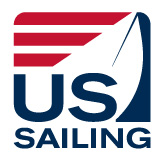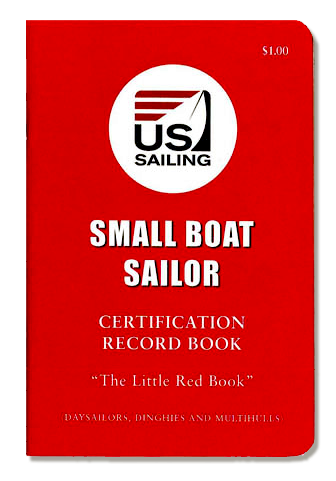
NOW CERTIFYING SAILORS, ALL ABOARD!
Able to skipper a non-ballasted centerboard/daggerboard monohull or multihull sailboat of approximately 8 to 20 feet in length by day in light to moderate winds (up to 15 knots) and sea conditions. Knowledge of basic sailing terminology, sail trim, points of sail, crew responsibilities, seamanship and safety including capsize avoidance/recovery and navigation rules to avoid collisions.
KNOWLEDGE
1. Identify and describe the following sailboat parts and their functions:
2. Identify and describe the functions of the following sails, sail parts, and sail controls:
3. Define the following locational, directional, relative, and other terms:
WIND AWARENESS, BOAT CONTROL, & POINTS OF SAIL
4.Describe visual and non-visual indicators that may be used to provide a sense of wind direction and strength.
5.Describe the force generated as air flows over a sail when sailing upwind, and how a sail works differently when sailing downwind.
6.Describe how to adjust steering and sails as wind speed and direction change relative to the boat.
7.Describe proper adjustments to the centerboard/daggerboard, sails, and crew positions before and during the following maneuvers:
- Heading up
- Bearing away
- Tacking
- Jibing
8.Describe methods of accelerating, decelerating, and stopping a sailboat.
9. Describe and identify the following points of sail and sailboat positions relative to the wind:
- No sail zone
- In irons
- Head to wind
- Port tack
- Starboard tack
- Close hauled
- Close reach
- Beam reach
- Broad reach
- Run
- Sailing by the lee
10.Describe how the sails, crew and centerboard/daggerboard should be positioned for each point of sail.
SEAMANSHIP
11.List all federally required equipment and examples of recommended equipment to be carried aboard a sailboat of less than 20 feet.
12.List the tasks that must be accomplished when setting up or rigging a small sailboat.
13.Describe the types of personal gear that is appropriate to bring on a small sailboat and the benefits and methods of stowing and securing gear and equipment properly.
14.List sources of information concerning local sailing conditions including weather, tides, currents, wind, fog, storms, and other hazards.
15. Describe, using diagrams as appropriate, the applicable rules for a 20-foot recreational sailing vessel, as found in the USCG Navigation Rules and Regulations Handbook.
16.Describe the risks of departing from and returning to a beach with waves, and methods to avoid damage and injury.
17.Describe the causes and risks associated with an accidental jibe and ways in which it can be prevented.
18.Describe methods for getting a sailboat out of irons and under control onto a desired tack.
19.Describe the risks associated with cold or hot weather and water temperature, what is appropriate clothing for different conditions, and how to prevent temperature-related ailments.
20.Describe the risks associated with overhead power lines as related to trailering, launching and sailing.
21.Describe why it is critical to wear lifejackets and know the location and correct operation of all safety equipment.
22.State different ways a sailboat can capsize and describe how to prevent and recover from a capsize.
23.Describe how to prevent running aground and recovery procedures from a grounding.
24.Describe means for prevention, and procedures for recovering a person in the water (Man Overboard, or MOB), including how to maneuver the sailboat safely back to the person.
25.Describe an internationally recognized distress signal that can be made while on board a sailboat or in the water.
SKILLS READINESS & GETTING UNDERWAY
26. Select clothing appropriate for the expected sailing conditions.
27. Put on a life jacket, ensuring it is serviceable and fits properly.
28. Perform a pre-departure inspection to verify the sailboat is safe and ready for sailing, including a check of safety equipment and proper stowage of gear on board.
29. Set up mast and rigging (as applicable); attach and ready all sails, boat parts and lines properly.
30. Launch the sailboat into the water using available equipment (e.g., trailer, hoist or dolly), as applicable.
31. Board the sailboat, safely distributing persons while maintaining stability.
32. Secure and properly position the rudder and centerboard/daggerboard, as applicable.
33. Orient for departure by determining and pointing to the wind direction (and oncoming waves if beach launching).
34. Raise sail(s) using appropriate sequence.
35. Get underway by pushing or turning the sailboat in appropriate direction and utilizing proper steering, crew position, and sail trim.
MANEUVERING THE SAILBOAT
36. Use proper steering and sail trim to keep the sailboat under control.
37. Avoid potential collisions by observing the Navigation Rules.
38. Ensure the main halyard is properly tensioned, then adjust the boom vang, downhaul/cunningham and outhaul, if available, while sailing on a close reach.
39. Use sail trim to decrease and increase the speed of the sailboat.
40. Hold a steady course using proper steering, crew position and sail trim.
41. Bear away from a close reach to a broad reach using proper steering, crew position and sail trim.
42. Head up from a broad reach to a close reach using proper steering, crew position and sail trim.
43. Stop the sailboat completely while sailing on a close reach.
44. Accelerate and resume sailing on a close reach after having been stopped.
45. Place the sailboat in irons and then get out of irons using appropriate techniques.
46. Bear away from a broad reach to a run, avoiding an unintentional jibe by identifying and listing indicators that a jibe is imminent.
47. Tack the boat from close-hauled to close-hauled avoiding getting stuck in irons and using proper steering, crew position, sail trim and verbal commands (if crew on board).
48. Jibe the boat from broad reach to broad reach keeping the sailboat in control and using proper steering, crew position, sail trim and verbal commands (if crew on board).
TOWING & RECOVERY PROCEDURES
49.Accept and secure a bow tow and/or side tow and maneuver safely, if a towing boat is available.
50.Demonstrate the correct actions to be taken while under sail from the time a person falls overboard until safely recovered.
51.Return a capsized sailboat (if boat in use is able to be capsized with relative ease) to an upright position and re-enter the boat, using appropriate techniques.
52.Use a righting line to return a capsized multihull to an upright position.*
RETURNING TO SHORE
53.Plan a safe arrival at shore (slip, dock, mooring, beach), bring the boat to a stop at the desired location, and lower sails using appropriate techniques.
54.Get off the boat safely while maintaining stability.
55.Retrieve the sailboat from the water using available equipment (e.g., trailer, hoist or dolly), as applicable.
56.Stow all lines, sails and gear, including properly furling, flaking, or folding all sails.
LINE HANDLING & KNOTS
57. Demonstrate techniques for coiling and flaking lines.
58. Throw a line accurately toward an intended target and receive a thrown line from another individual.59.Describe the purpose of, and construct in a timely manner, each of the following knots and hitches:
- Figure-8 Knot
- Square (Reef) Knot
- Clove Hitch
- Bowline
- Cleat Hitch
- Round Turn & 2 Half Hitches

